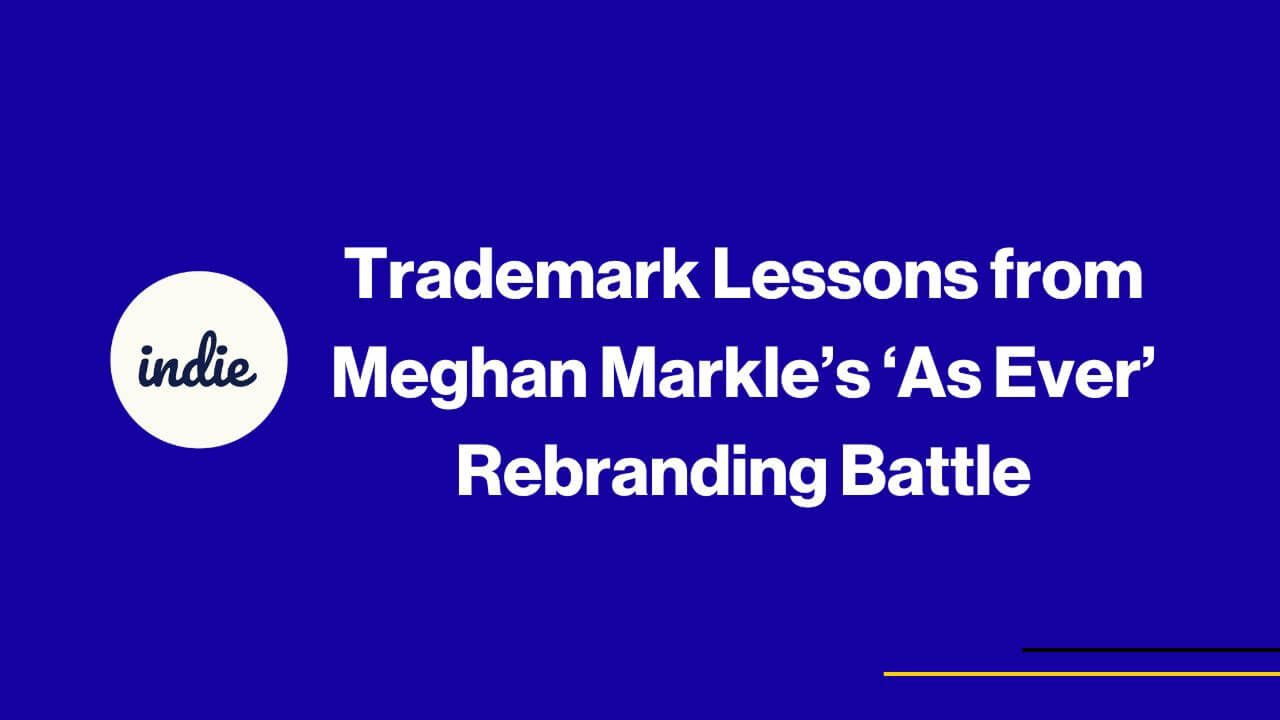When launching a new brand, choosing the perfect name is crucial—but securing trademark protection is just as important. Meghan Markle’s recent rebranding to “As Ever” highlights the legal challenges of trademark disputes and why businesses, big or small, must take careful steps to avoid costly mistakes.
In this post, we’ll break down the trademark issues behind Markle’s rebranding, explore why her previous name was rejected, and provide actionable advice for entrepreneurs looking to protect their brand.
The ‘As Ever’ Rebranding Controversy: A Trademark Case Study
Meghan Markle initially planned to launch a lifestyle brand under the name “American Riviera Orchard.” However, reports surfaced that her trademark application faced rejection from the U.S. Patent and Trademark Office (USPTO) due to two major issues:
- Geographic Descriptiveness – The phrase “American Riviera” is commonly associated with Santa Barbara, California, where Markle resides. Trademark law prohibits overly descriptive names that could mislead consumers.
- Application Inconsistencies – The USPTO often rejects applications that fail to clearly define the goods and services associated with the trademark.
Facing these hurdles, Markle pivoted to a new brand name: “As Ever.”
However, this new name quickly sparked controversy. A New York-based vintage clothing brand named As Ever, founded in 2017, expressed concerns over potential brand confusion.
Founder Mark Kolski noted that small businesses often struggle to protect their brand names when larger, well-funded entities enter the space. The situation raises an important question: How can businesses protect their trademarks and avoid legal battles?
Why Do Trademark Applications Get Rejected?
Meghan Markle’s situation is not uncommon. According to USPTO data, more than 50% of trademark applications receive an initial refusal, often due to procedural issues. Many refusals can be overcome with proper legal responses, but it’s important to understand the common reasons for rejection:
✅ Likelihood of Confusion – If your mark is too similar to an existing registered trademark, the USPTO may reject it to prevent consumer confusion.
✅ Descriptiveness – A mark that directly describes a product or service (e.g., “Organic Apple Juice” for a juice brand) is unlikely to be approved.
✅ Generic Terms – Common words that fail to distinguish a brand (e.g., “Best Coffee”) are often denied protection.
✅ Failure to Show Use in Commerce – Trademarks require proof of commercial use. Failing to submit proper documentation can lead to rejection.
Understanding these common pitfalls can help businesses strengthen their trademark applications and avoid unnecessary legal trouble.
What Can Businesses Learn from This?
1. Conduct a Comprehensive Trademark Search
Before settling on a name, research existing trademarks using the USPTO’s Trademark Electronic Search System (TESS). Checking social media handles, domain names, and state trademark databases can also help prevent conflicts.
2. Work with a Trademark Attorney
Trademark law is complex. A lawyer can help navigate the application process, conduct thorough searches, and address potential conflicts before they become legal battles.
3. File for Protection Early
In the U.S., trademark rights are primarily based on first use in commerce, not just who files first. However, filing early still provides important legal benefits, such as establishing a public record of your claim and deterring others from using the name.
4. Monitor for Infringement
Even after securing a trademark, businesses must actively monitor for infringement. Tools like Google Alerts, trademark watch services, and legal professionals can help identify unauthorized use of a brand name.
Final Thoughts: Trademarks Matter
Meghan Markle’s trademark battle with As Ever is a high-profile reminder that trademark issues can affect any business—big or small. Whether you’re launching a startup or rebranding an existing company, protecting your brand name is essential.
By conducting thorough research, working with professionals, and filing for protection early, businesses can avoid costly disputes and build a strong, legally protected brand.
Related Articles

